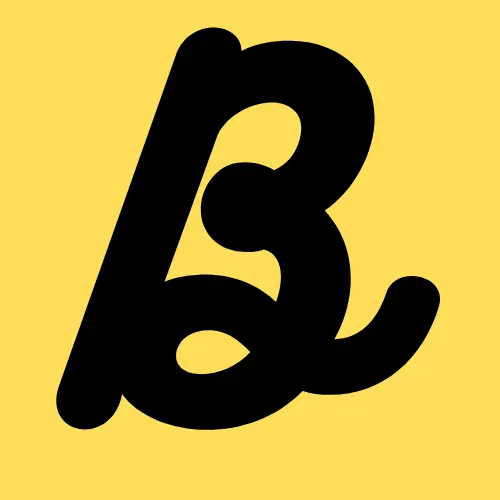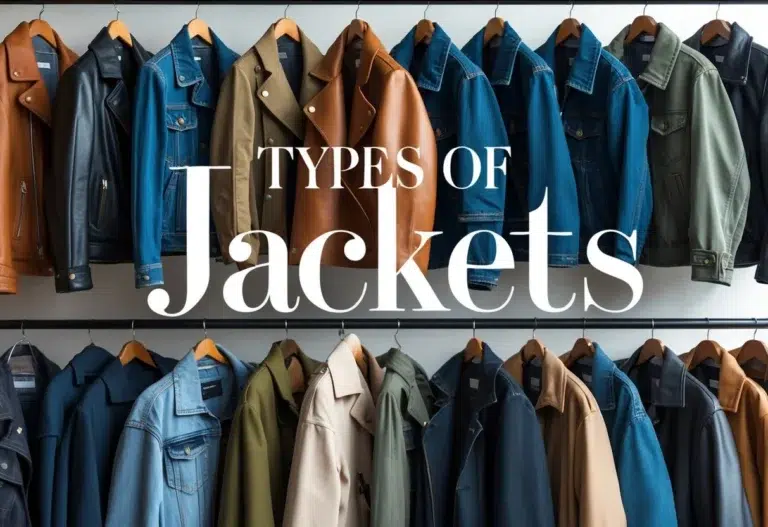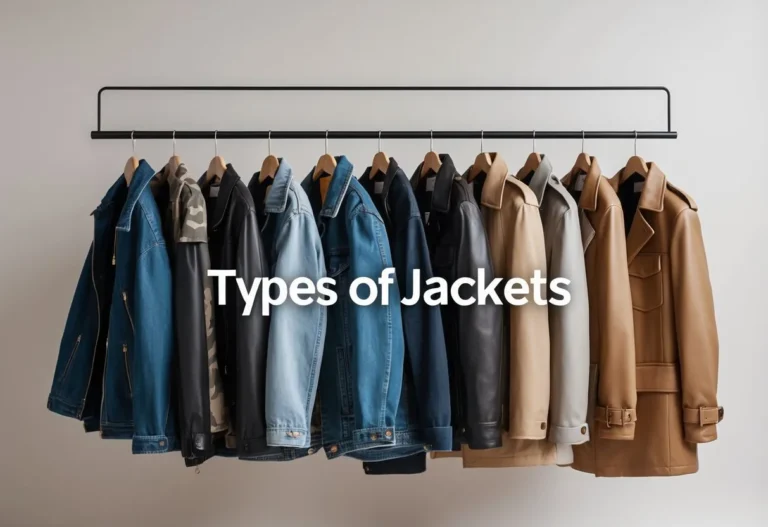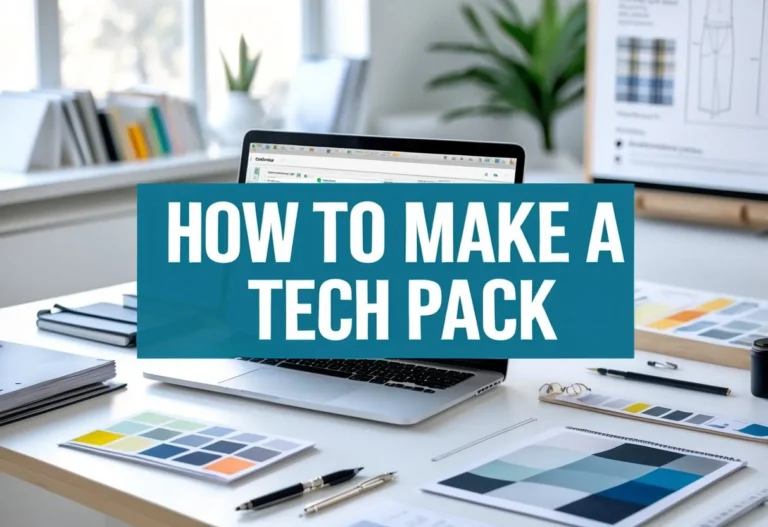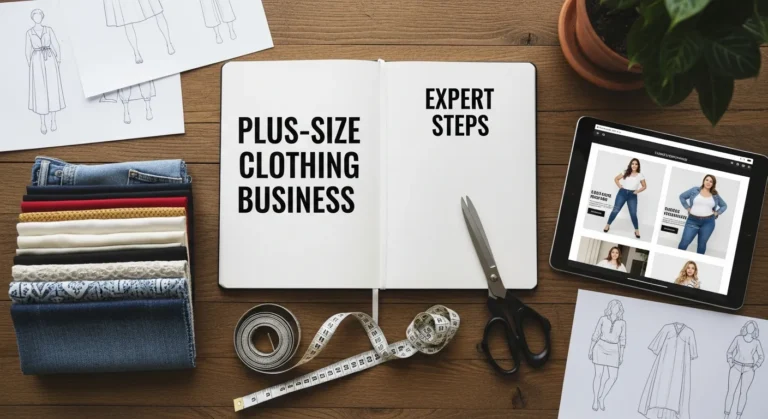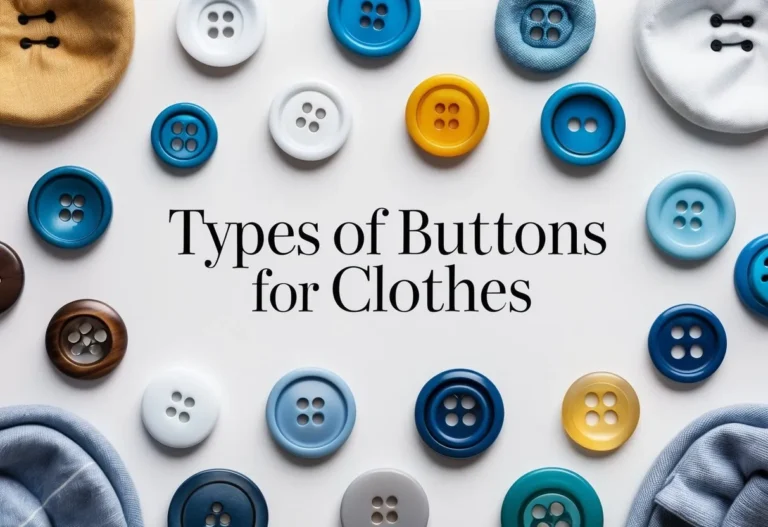Clothing Line Business Plan: Blueprint for Brand Success
Starting a Clothing Line Business Plan requires more than just creative designs; it needs a clear plan that guides the business from idea to market. A clothing line business plan outlines the goals, strategies, and actions necessary to launch and grow a successful fashion brand. This plan covers everything from defining the target market, setting up operations, to planning finances and marketing efforts.

Creating a detailed business plan helps entrepreneurs make informed decisions and attract investors by showing them the path to success. It also sets a strong foundation to stay organized and focused as the business develops in a competitive marketplace.
A well-prepared clothing line business plan increases the chances of long-term success by clearly describing the brand’s vision, products, and steps to reach customers. This approach ensures the business can adapt and thrive even in changing fashion trends.
Key Takeaways
- A solid business plan guides clothing lines from concept to market launch.
- Defining goals and strategies helps secure funding and stay focused.
- Clear planning supports growth and adapts to market changes.
Executive Summary

This clothing line business plan highlights the brand’s mission, competitive edge, and the financial strategies needed to launch and grow. It outlines clear goals, distinct market advantages, funding needs, and expected financial outcomes to provide a concise overview for potential investors.
Key Objectives
The primary goal is to establish the brand as a go-to source for professional women’s workwear that combines style, quality, and affordability. It aims to secure partnerships with major department stores in urban markets within the first year. Another objective is to build strong brand recognition through targeted marketing campaigns focusing on social media and influencer collaborations.
The company plans to achieve a steady sales growth rate of 15% annually by expanding product lines that suit multiple professional age groups. It also targets creating an efficient supply chain by outsourcing manufacturing to trusted local vendors to reduce costs and maintain quality.
Unique Value Proposition
This clothing line stands out by offering modern, versatile work apparel designed for women aged 26 to 64. The designs are professional yet fashionable, allowing wearers to transition smoothly from office settings to social events. High-quality materials sourced from U.S.-based suppliers ensure durability and comfort while maintaining competitive pricing.
The brand emphasizes inclusivity by catering to various body types and professional levels, making it accessible to both entry-level and executive women. Its outsourced, locally based manufacturing model supports faster turnaround times and responsiveness to market trends, which many competitors lack.
Funding Requirements
The brand seeks $1,000,000 in debt financing to cover manufacturing, marketing, legal services, and working capital. The largest portion, $500,000, will support production and distribution logistics. Marketing efforts will receive $300,000 to engage a professional advertising agency for campaign development and promotions.
Legal and compliance tasks, including intellectual property protection and contract management, are allocated $100,000. The remaining $100,000 is reserved for operational expenses to ensure smooth daily functions during the first year of business.
Summary of Financial Projections
The financial plan projects breaking even within the first 18 months. Initial sales are expected to generate $750,000 in revenue by year one, growing to $1.2 million by year two. The gross margin is anticipated to stabilize at 55%, reflecting efficient manufacturing costs and smart pricing strategies.
Operating expenses will be carefully managed, with marketing and administrative costs kept below 30% of total revenue. Profitability is expected by the end of the second year, with positive cash flow enabling reinvestment in product development and market expansion.
Company Overview

This part explains the foundation of the clothing brand. It covers the history and identity of the brand, how the business is legally set up, the team structure, and the plans for growth.
Brand Story and Identity
The brand story describes how the clothing line began and what it stands for. It often includes the founders’ inspiration and the values that guide the company. This story helps build a connection with customers.
Brand identity covers the look and feel of the brand, including the logo, colors, and overall style. It reflects the brand’s mission and target market. For example, a sustainable fashion brand may use earthy tones and simple designs to show its commitment to the environment.
Together, the brand story and identity shape how customers see and remember the company, which is crucial for standing out in the fashion industry.
Legal Structure
The legal structure defines how the clothing business operates under the law. Common forms include sole proprietorship, partnership, LLC, or corporation. This affects taxes, liability, and how decisions are made.
Choosing the right structure depends on factors like ownership, funding needs, and plans for expansion. For example, a corporation allows issuing shares to investors, while an LLC offers easier management and liability protection.
It is important for the business plan to list the chosen legal structure clearly, along with the company’s registered name and domain name if applicable.
Organizational Structure
This section explains who is responsible for what within the company. The structure can range from a simple setup with a few roles to a complex hierarchy.
Typical roles include founders, creative directors, marketing managers, and production staff. Clear roles and reporting lines ensure smooth operations and accountability.
A table often helps clarify the structure:
| Role | Responsibilities |
|---|---|
| CEO | Overall management and strategy |
| Creative Director | Design and product development |
| Marketing Manager | Brand promotion and customer outreach |
| Operations Manager | Supply chain and production oversight |
Defining the organizational structure helps attract investors by showing the team’s ability to execute the business plan.
Growth Plan
The growth plan outlines how the clothing brand intends to expand. This could include launching new collections, entering new markets, or increasing sales channels like online stores and physical shops.
It should also detail timelines and milestones, such as reaching certain sales goals or opening additional locations. Plans may involve hiring more staff or investing in technology and marketing.
Including measurable goals and strategies shows potential investors the company’s path to sustainability and scaling. The growth plan aligns with both short-term actions and long-term vision.
Market Analysis

This section provides a detailed look at the clothing industry’s current state, the key groups of customers, their preferences, and the competition. Understanding these points helps shape strategies that meet market needs and stand out in a crowded field.
Industry Overview
The clothing industry is a large and steadily growing market. In 2024, it was valued at about $1.36 trillion globally and is expected to grow at around 4.6% annually through 2029. This growth reflects steady demand for apparel across many customer groups, despite challenges.
Economic uncertainty and inflation may slow growth, with rates expected between 2% and 4% in 2024. Environmental concerns are also pressing, as the fashion industry contributes about 10% of global carbon emissions and produces significant waste. Supply chains remain fragile after disruptions caused by recent global events, impacting production efficiency and costs.
Target Market and Demographics
Successful clothing lines clearly define their target customers by age, income, location, and lifestyle. Typically, core customers fall between 25 to 45 years old, with incomes above $75,000, living mainly in urban areas like New York or Los Angeles.
This group often includes professionals and entrepreneurs who care about style and quality. Both men and women in this segment seek clothing that fits professional and social settings. Education levels are usually a bachelor’s degree or higher, aligning with tech-savvy buying habits.
Psychographics and Shopping Behavior
Target customers value sustainability, ethical production, and personal style. They often avoid fast fashion due to environmental concerns and seek durable, versatile clothes that work for different occasions.
Their lifestyle tends to be urban, conscious of health and social issues, and engaged in culture or travel. These buyers prefer brands that share their values and offer transparent sourcing and fair labor practices. Shopping behavior leans toward omnichannel experiences, combining online research with in-store visits or pop-ups.
Competitive Landscape
The clothing market features several key types of competitors, from established eco-friendly brands to fast-growing affordable options. Below is a simplified comparison:
| Competitor | Strengths | Weaknesses | Positioning |
|---|---|---|---|
| Organic Threads | Strong brand, wide product range | Few physical stores, high prices | Premium eco-friendly clothing |
| Eco-Chic Apparel | Affordable pricing, influencer support | Limited range, quality concerns | Trendy, sustainable fashion |
| Sustainable Fashion House | Luxury products, brand name | Pricey, limited online presence | Ultra-premium ethical fashion |
| Ethical Wardrobe Co. | Wide styles, affordable | Brand recognition low, variable quality | Affordable ethical clothing |
To compete effectively, a brand must highlight unique features such as personalized experiences, quality craftsmanship, or a balance of luxury and accessibility. Clear positioning helps attract loyal customers and build long-term success.
Product Line and Development

A successful clothing line depends on a clear range of products, a well-planned development process, and a commitment to quality and sustainability. Attention to sourcing and specific product categories helps a brand meet customer expectations and stand out in a competitive market.
Product Offerings
The product offerings should reflect the brand’s identity and target audience. This may include everyday essentials like blouses, sweaters, and pants, as well as specialty items such as activewear, outerwear, and luxury pieces. High-quality materials and craftsmanship are crucial for building trust.
Brands often focus on trendy yet functional designs that fit current fashion trends while ensuring comfort and durability. Including footwear or streetwear fashion elements can broaden appeal. Offering a balanced range from casual to professional wear helps address different customer needs.
Product Development Process
The product development process starts with concept creation and market research to align designs with customer preferences. Designers sketch ideas, choose fabrics, and create prototypes to test fit and style.
After testing, adjustments are made before moving to production. Efficient communication with manufacturers ensures quality control. Outsourcing parts of development or manufacturing can help manage costs but requires oversight to maintain standards.
Sustainable Materials and Ethical Sourcing
Incorporating sustainable materials like organic cotton and recycled polyester reflects growing consumer demand for eco-friendly clothing. Ethical sourcing means the brand uses suppliers committed to fair labor practices and environmental responsibility.
Using sustainable fabrics reduces environmental impact and aligns with social values. Brands can highlight this in marketing to connect with consumers who prioritize sustainability. Transparency in sourcing also strengthens brand trust.
Product Categories
Product categories should cover distinct customer needs while maintaining brand cohesion. Typical categories include:
- Workwear: blouses, blazers, skirts, and dresses designed for office environments
- Activewear: performance fabrics intended for fitness and casual wear
- Outerwear: coats and jackets suitable for different seasons and climates
- Footwear: shoes that complement apparel and reflect the brand’s style
Clear categorization helps with inventory management and targeted marketing. It also allows the brand to expand gradually into new areas based on customer feedback.
Marketing Strategies

A strong marketing plan targets the right audience and builds a clear brand identity. It uses a mix of online and offline actions to increase visibility and sales. Focused efforts on positioning, digital tools, influencer work, and traditional outreach create a balanced approach to grow a clothing line.
Brand Positioning
Brand positioning defines how the clothing line stands out in the market. It starts by identifying a unique value proposition that appeals to a specific customer group. This could be based on style, price, quality, or ethical practices like sustainability.
Clear brand messaging reflects in the logo, color palette, and tone of communication. Consistency across packaging, website, and social media builds recognition and trust. A strong brand identity supports customer loyalty and helps justify pricing strategies.
Positioning also involves selecting a niche, such as eco-friendly activewear or urban street style. Focusing on a niche helps avoid competing with mass-market brands and targets shoppers more precisely.
Digital Marketing and Social Media
Digital marketing is essential for building an online presence and driving e-commerce sales. Creating a user-friendly online store on platforms like Shopify can streamline the buying process.
Social media marketing on Instagram, TikTok, and Pinterest engages customers with high-quality images, videos, and shopping features. Posting regularly and using relevant hashtags improves reach.
Content marketing, such as blog posts or styling guides, educates and attracts the audience. Email marketing helps maintain contact with customers through promotions and product updates.
Tracking analytics on social platforms and websites guides improvements by showing what attracts and converts customers.
Influencer Collaborations
Partnering with influencers extends reach to targeted audiences efficiently. Choosing influencers whose style matches the brand ensures authenticity and better engagement.
Micro-influencers often yield strong results because their followers trust their opinions. Collaborations can include sponsored posts, giveaways, or exclusive collections.
Affiliate marketing, where influencers earn commissions on sales, motivates ongoing promotion without a heavy upfront cost. This method helps spread awareness across different social channels.
These partnerships can significantly boost brand credibility when real people showcase the clothing and share reviews.
Offline Marketing Initiatives
Offline marketing complements digital efforts by promoting the brand in physical spaces. Hosting or participating in fashion shows and pop-up shops introduces the brand directly to potential customers.
Local events and boutique partnerships increase product visibility in communities where target customers shop. Flyers, posters, and branded merchandise maintain presence beyond the digital world.
Traditional PR, such as press releases and media coverage, builds credibility and reaches those less engaged online. Loyalty programs or contests in stores encourage repeat buyers and deepen customer relationships.
Offline strategies help create memorable experiences and stronger local brand recognition.
Operations Plan

The operations plan focuses on how the clothing line will handle production, manage inventory, and serve customers. Each area is designed to support quality products, efficiency, and positive customer experiences.
Production and Manufacturing
The clothing line prioritizes ethical production by partnering with factories that follow fair labor practices and environmental standards. It sources materials from suppliers committed to sustainability, such as organic cotton or recycled fabrics.
Production runs are planned carefully to balance demand and reduce waste. Manufacturing processes include regular quality checks to ensure consistency and durability. Outsourcing some tasks like cutting or sewing helps manage costs while maintaining control over final product quality.
Clear communication with manufacturers is essential. The company establishes detailed timelines and oversees compliance with ethical standards to avoid delays and reputational risks.
Inventory Management
Inventory management uses a just-in-time system to reduce excess stock and storage costs. Sales data and market trends guide order quantities to keep stock levels aligned with customer demand.
The company uses software to track inventory in real-time, monitor product turnover, and identify fast- and slow-moving items. This system supports efficient restocking and helps prevent overproduction.
Storing products in climate-controlled warehouses protects fabric quality. Regular inventory audits ensure accuracy and highlight discrepancies early, helping maintain operational efficiency.
Customer Service Approach
Customer service aims to build trust and loyalty through clear communication and responsiveness. The team offers multiple contact channels—email, phone, and social media—to handle inquiries and issues promptly.
Returns and exchanges policies are clear and fair, emphasizing customer satisfaction while protecting the business’s interests. Personalized assistance helps customers find the right size and style, reducing return rates.
Feedback mechanisms encourage customers to share their experiences, which informs improvements in products and service. Staff training focuses on product knowledge, empathy, and problem-solving to enhance every interaction.
Financial Plan

Starting a Clothing Line Business Plan shows how much money is needed to start and operate the clothing line. It also projects future income and costs. The plan must balance expenses and pricing to achieve profit while considering market demand and operational needs.
Startup Costs
Startup costs include all expenses before opening the clothing line to customers. These often cover:
- Product development: fabric, samples, design work
- Manufacturing: machinery or third-party production fees
- Licenses and permits: legal requirements to operate
- Marketing and branding: logo design, website setup, initial advertising
- Equipment and supplies: computers, software, sewing machines
If the business uses dropshipping, startup costs may be lower since inventory and storage costs decrease. A clear estimate of these costs is needed to know how much initial funding is necessary and to convince investors or lenders.
Revenue Projections
Revenue projections estimate how much the clothing line will sell over time. These forecasts are based on market research, target audience buying habits, and sales channels (online, retail, or both).
Projections should include:
- Sales volume by month or quarter
- Seasonal fluctuations due to fashion cycles
- Growth assumptions, factoring in marketing efforts or store expansions
Accurate revenue projections help set realistic sales goals and guide pricing and marketing strategies. They also show investors potential returns over three to five years.
Pricing Strategy and Profit Margins
Pricing strategy determines how much customers pay for products. It must cover costs and create profit while remaining competitive.
Common approaches include:
- Cost-plus pricing: adding a standard markup to the production cost
- Value-based pricing: setting prices based on perceived customer value
Profit margins depend heavily on pricing and production costs. Typical profit margins in clothing range from 30% to 60%. Maintaining a good margin requires controlling expenses and pricing products that customers find affordable but profitable for the business.
Operating Expenses
Operating expenses are ongoing costs needed to run the business daily. They include:
- Rent and utilities for physical stores or office spaces
- Salaries and wages for staff and management
- Marketing and advertising to attract and retain customers
- Inventory management expenses, including shipping and storage
Businesses using dropshipping may reduce storage and logistics costs but could face higher vendor fees. Careful tracking of operating expenses helps manage cash flow and maintain profitability during growth stages.
Frequently Asked Questions

A strong clothing line business plan covers detailed product descriptions, market analysis, and clear financial goals. It also requires a focused marketing approach and legal protections to support business growth. Understanding these areas helps create a realistic and effective strategy.
What are the key components of a successful clothing line business plan?
It should include an executive summary that highlights the brand’s mission and target audience. The plan needs a clear description of products, sourcing, and pricing. Market research and competitor analysis show demand and opportunities. Finally, financial projections and marketing plans guide growth and operations.
How can I determine the target market for my clothing line?
Research customer demographics like age, income, and lifestyle preferences. Analyze buying habits and fashion trends relevant to those groups. Surveys, social media insights, and competitor study help define who is most likely to buy the products.
What are the essential financial projections for a new clothing line startup?
Include sales forecasts based on market research and pricing strategy. Estimate all costs such as production, marketing, and staff salaries. Outline funding needs and expected profit margins. Preparing multiple scenarios helps plan for growth and challenges.
How should I structure my clothing line’s marketing and sales strategy?
Focus on building a professional website with clear product images. Use social media to share content and engage followers. Consider online ads and influencer collaboration for wider reach. Include offline methods like pop-up shops or local events. Email campaigns can maintain customer relationships.
What legal considerations must I take into account when starting a clothing line?
Trademark the brand name and logos to protect intellectual property. Obtain necessary business licenses and permits. Understand contracts with suppliers and manufacturers. Comply with product safety and labeling regulations.
What is the best way to secure funding for a clothing line business?
Explore options like personal savings, small business loans, or investments from family and friends. Crowdfunding and angel investors are also viable. Presenting a clear business plan with financial details increases chances of securing funding.
